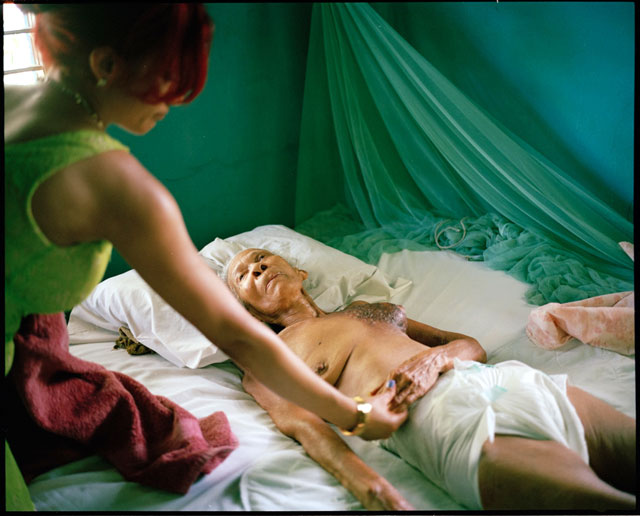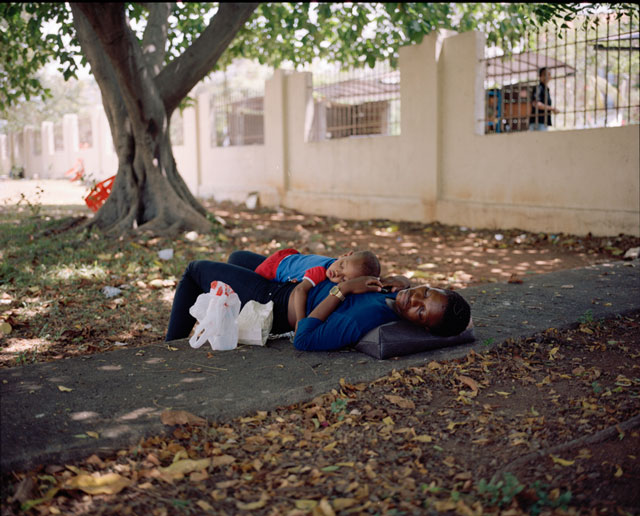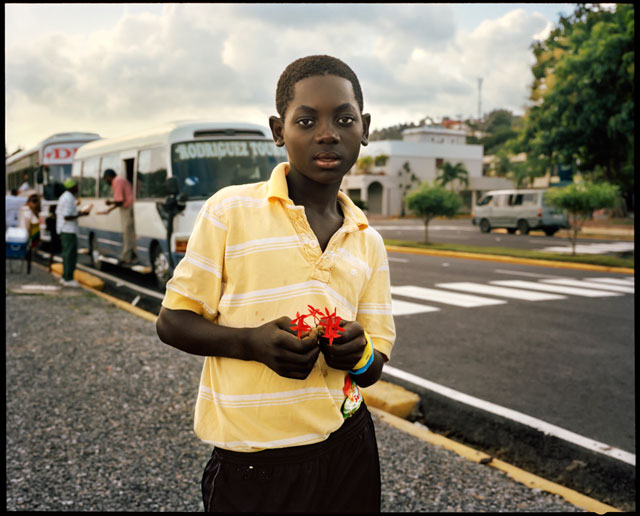Si Dios Quiere

By Stephanie Guillen
Bronx-raised documentary photographer Adeline Lulo was born in Washington Heights. Her upbringing as a child spending summers in the Dominican Republic inspired her to photograph her motherland as well as her community in the Heights.
“The Dominican Republic is a place I call home,” says Lulo. “My childhood was filled with many fond memories of playing and running around in the campo (countryside). I couldn’t explain it, but I understood that my life in the Dominican Republic was very different from my life in New York. When I wasn’t chasing roosters, or trying to catch lizards, I was eating mangos from my grandfather’s tree or shouting ‘se fue la luz’ when the lights when out.”
Lulo, 25, started her project Si Dios Quiere (God Willing) in 2013. It portrays the lives of families in the Dominican Republic, as well as Dominican immigrants living in the United States. Her work is shaped around family, history and memory.
As a child, Lulo’s parents would take her and her sister home to their native land where they introduced them to their roots, family and friends. Once she was of legal age to work in U.S., her summer visits to the Dominican Republic came to an end. The project started as a way to reconnect with her friends, family and community. Lulo’s mother would take her to visit local families, donate clothing and pay their respects to those who were ill. One of Lulo’s photographs in the Si Dios Quiere series illustrates an elderly woman in her death bed, dying from old age and untreated breast cancer. Her left breast, shriveled and charcoal toned, looks as though it had been burnt, and by her side is a young caretaker. “That photo was the hardest to take,” says Lulo. The elderly woman never had access to healthcare.

Lulo learned that life in the countryside was very different than life in the U.S. There were frequent blackouts and limited water. The D.R.’s population is roughly 10 million, according to the World Population Review, with 32.4 percent of the population living in poverty. There is little to no democratic mechanism for socio-political change. Limited water treatment, improper waste management, and biological or chemical waste disposal system put people at environmental risk of hazardous health conditions. Living in these conditions results in a high rate of crime and violence.
“Si dios quiere is a saying I have heard my whole life,” says Lulo. “It is a belief used by Dominicans expressing that everything happens according to what God has planned for you.” It is customary in Dominican culture to put God first so that he can guide people towards the things they would like to achieve, she explains. “If it does not happen it is understood that it was not in God’s plan and we accept that,” says Lulo. “I used color film to grasp the beauty that I found in the Dominican Republic. These images consist of portraits and still life’s. I am looking at the textures and conditions of the shanty-style architecture where they live their lives – creating a perception of the spaces we inhabit.” Lulo prefers shooting film over digital because of the quality and imperfections. She shoots real life, and she believes film enhances this.

In 2015, Lulo expanded the project to include Dominicans in Washington Heights – the largest concentration of Dominicans in the United Sates. Roughly 675,000 Dominicans live full or part time in New York City, according to the American Community Survey. Dominican immigrants have succeeded in molding a place for themselves within the American landscape. First and second-generation Dominicans have struggled in migrating to the U.S., facing difficulties of integration and assimilation. They have carved out a society with a distinct cultural identity, creating a strong unified Dominican community.
In migrating to the U.S., Dominicans have carried their roots and traditions with them. “Though they have succeeded in becoming a part of the U.S., there has always been a longing and sense of displacement for their origins – living partly here and partly there,” says Lulo, explaining why this second part of the series was so important for her to incorporate. “The Dominican home has a strong representation of family especially evident in the photographs of homes, where children’s wide faces and living room walls full of family photos illustrate a sense of need, desire and hunger for life.”

The romanticized quality in her images is a result of her personal connection that ties her back to her childhood. “Shooting with film creates a nostalgic feeling for me; having to process the negatives to then scan my images and see the work that I made at a later time is a very magical feeling,” she says. In her project Lulo includes a lot of photographs of Haitians in the Dominican Republic. She wants to bring light to the current social political conflict over Haitian Dominicans’ citizenship and questions of belonging.
Lulo earned a BFA from Parsons School of Design and was recently selected as a recipient for the Bronx Recognizes Its Own (BRIO) Award. She was also the recipient of the En Foco Photography Fellowship and William Randolph Hearst Endowed Scholarship. Her work has been recognized by Latin American Fotografia and The New York Times. Her work provides a lens into the lives of individuals facing struggles we can all relate to or sympathize with. Her themes are universal, as they highlight poverty, struggle, inequality, and family values.

Saved under Culture, Featured Slide, Multimedia
